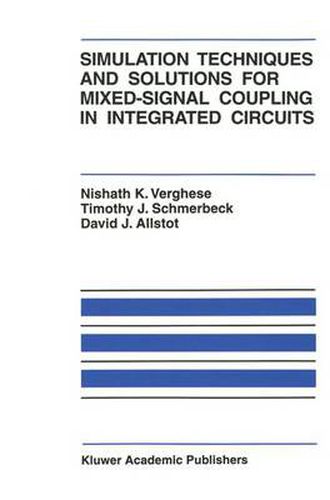Readings Newsletter
Become a Readings Member to make your shopping experience even easier.
Sign in or sign up for free!
You’re not far away from qualifying for FREE standard shipping within Australia
You’ve qualified for FREE standard shipping within Australia
The cart is loading…






This title is printed to order. This book may have been self-published. If so, we cannot guarantee the quality of the content. In the main most books will have gone through the editing process however some may not. We therefore suggest that you be aware of this before ordering this book. If in doubt check either the author or publisher’s details as we are unable to accept any returns unless they are faulty. Please contact us if you have any questions.
The goal ofputting systems on a chip has been a difficultchallenge that is only recently beginning to be met. Since the world is analog putting systems on achip requires putting analog interfaces on the samechip as digital processing functions. Since some processing functions are accomplished more efficiently in analog cir- cuitry, chips with a large amountofanalog and digital circuitry are beingdesigned. Whethera small amountor analog circuitryiscombined with varying amounts ofdig- ital circuitry or the other way around, theproblems encountered in marrying analog and digital circuitryarethe samebutwith differentscope. Someofthe mostprevalent problems are chip/packagecapacitiveand inductivecoupling, ringing on the RLC tuned circuits thatfonn the chip/package powersupply rails and off-chip drivers and receivers, coupling betweencircuits through thechip substrate bulk, and radiated emissions from the chip/package interconnects. To aggravate the problemsofdesign- ers who have to deal with the complexityofmixed-signal coupling is the lackofveri- fication techniques to simulate the problem. In addition to considering RLC models for the various chip/package/board level parasitics, mixed-signal circuitdesigners must also model coupling through the common substrate when simulating ICs to obtain an accurate estimateofcoupled noise in their designs. Unfortunately, accurate simulationofsubstratecoupling has only recently begun to receive attention andtech- niques for the same are not widely known. This bookaddresses two majorissuesofthe mixed-signal coupling problem - how to simulate it and how to overcome it. It identifies someofthe problems that will be encountered, gives examplesofactual hardware experiences, offers simulation te- xxi SIMULATION TECHNIQUES AND SOLUTIONS FOR MIXED-SIGNAL COUPLING IN IC. niquesandsuggestspossiblesolutions.
$9.00 standard shipping within Australia
FREE standard shipping within Australia for orders over $100.00
Express & International shipping calculated at checkout
This title is printed to order. This book may have been self-published. If so, we cannot guarantee the quality of the content. In the main most books will have gone through the editing process however some may not. We therefore suggest that you be aware of this before ordering this book. If in doubt check either the author or publisher’s details as we are unable to accept any returns unless they are faulty. Please contact us if you have any questions.
The goal ofputting systems on a chip has been a difficultchallenge that is only recently beginning to be met. Since the world is analog putting systems on achip requires putting analog interfaces on the samechip as digital processing functions. Since some processing functions are accomplished more efficiently in analog cir- cuitry, chips with a large amountofanalog and digital circuitry are beingdesigned. Whethera small amountor analog circuitryiscombined with varying amounts ofdig- ital circuitry or the other way around, theproblems encountered in marrying analog and digital circuitryarethe samebutwith differentscope. Someofthe mostprevalent problems are chip/packagecapacitiveand inductivecoupling, ringing on the RLC tuned circuits thatfonn the chip/package powersupply rails and off-chip drivers and receivers, coupling betweencircuits through thechip substrate bulk, and radiated emissions from the chip/package interconnects. To aggravate the problemsofdesign- ers who have to deal with the complexityofmixed-signal coupling is the lackofveri- fication techniques to simulate the problem. In addition to considering RLC models for the various chip/package/board level parasitics, mixed-signal circuitdesigners must also model coupling through the common substrate when simulating ICs to obtain an accurate estimateofcoupled noise in their designs. Unfortunately, accurate simulationofsubstratecoupling has only recently begun to receive attention andtech- niques for the same are not widely known. This bookaddresses two majorissuesofthe mixed-signal coupling problem - how to simulate it and how to overcome it. It identifies someofthe problems that will be encountered, gives examplesofactual hardware experiences, offers simulation te- xxi SIMULATION TECHNIQUES AND SOLUTIONS FOR MIXED-SIGNAL COUPLING IN IC. niquesandsuggestspossiblesolutions.